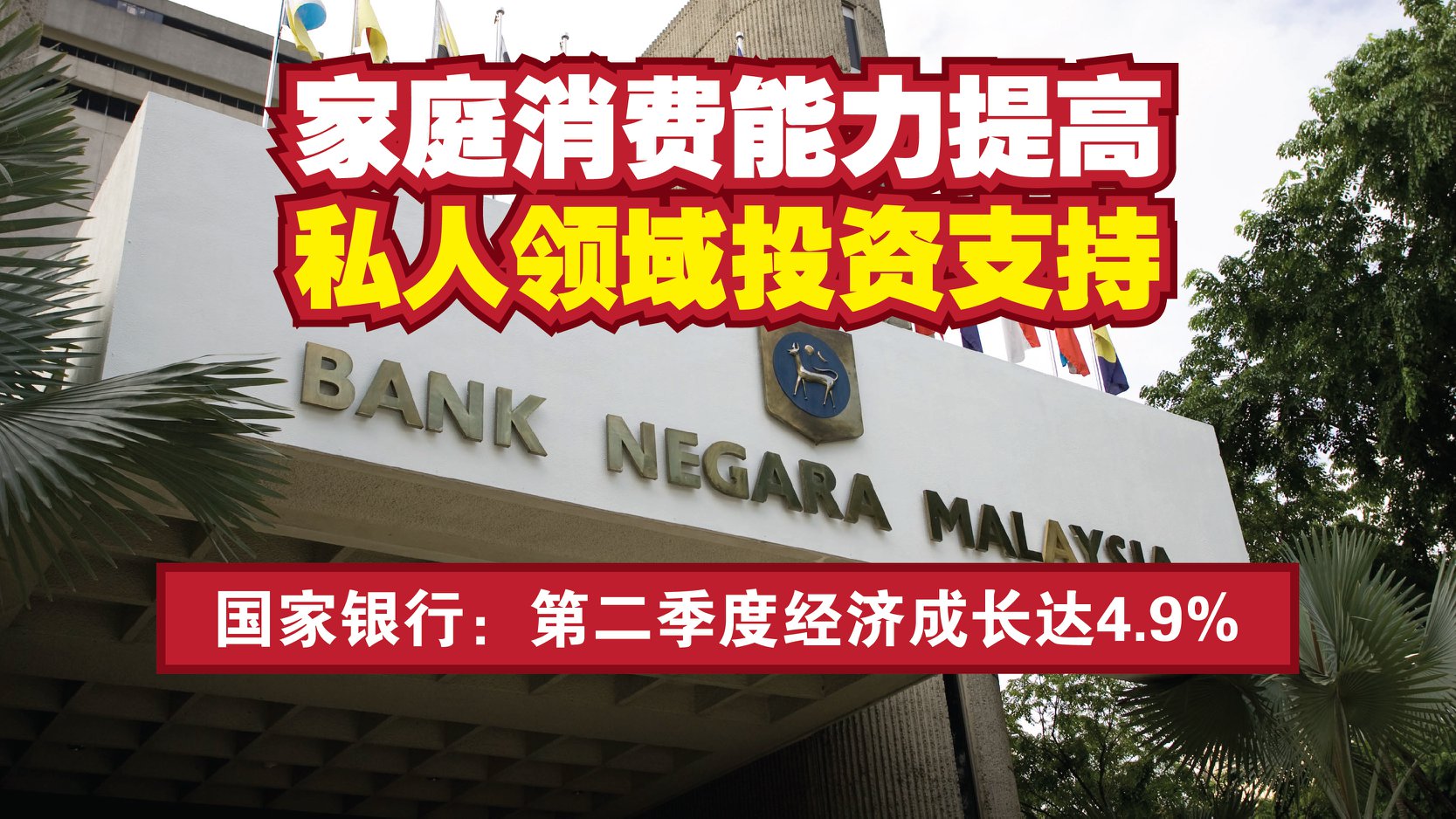国家银行今天发布文告,在马来西亚家庭消费能力提高及私人领域投资两项关键因素的支持下,国家经济在2019年第二季度增长至4.9%,而在2019年第一季度则是4.5%,同时这项增长比预期中乐观。
另外文告也指出,在采矿业、以及天然气产出的复苏;国内制造业、批发、零售业及服务业表现良好的情况下,马来西亚经济有望保持稳定成长。
“由于以国内为导向的工业表现较好,进而带动制造业领域的增长也有所改善。” 随着这些领域的成长率提高,推动了大马经济领域的增长。
同时国家银行也预测,2019年全年的经济增长将会保持在4.3%至4.8%。
以下为国家银行文告全文:
ECONOMIC AND FINANCIAL DEVELOPMENTS IN MALAYSIA
IN THE SECOND QUARTER OF 2019
The Malaysian economy grew by 4.9% in the second quarter of 2019
The economy recorded a stronger growth of 4.9% in the second quarter (1Q
2019: 4.5%), supported by higher household spending and private investment.
On the supply side, the mining sector rebounded, driven mainly by the
recovery in natural gas output. Growth in the manufacturing sector improved
marginally, supported by better performance of the domestic-oriented
industries. Services sector continued to expand amid sustained growth in the
wholesale and retail trade subsector. On a quarter-on-quarter seasonally-
adjusted basis, the economy grew by 1.0%.
For the quarter, headline inflation averaged higher mainly reflecting the lapse
in the impact of the Goods and Services Tax (GST) zerorisation that was
implemented in June 2018. Core inflation, excluding the impact of
consumption tax policy changes, was unchanged at 1.6%.
Exchange rate developments
In the second quarter, the ringgit depreciated by 1.5% against the US dollar
driven mainly by non-resident portfolio outflows as investor sentiments
remained subdued amid softening global growth outlook and escalations in
global trade tensions. These uncertainties remained elevated and continued
to dampen investors’ risk-appetite towards regional financial markets,
including Malaysia. From 1 July to 15 August, the ringgit depreciated by 1.2%
against the US dollar. For the year to date, the ringgit has depreciated by
1.3% against the US dollar, in line with most regional currencies. Going
forward, the confluence of global factors will continue to have bearing on the
movements of regional currencies, including the ringgit.
Financing conditions
Overall financing conditions are consistent with the current pace of economic
expansion, with demand for financing showing some signs of improvement
given higher loan applications during the quarter. Steady loan disbursements
across segments, including for SMEs and purchase of houses, continued to
support economic activity.
Going forward, the Malaysian economy is expected to remain on a
steady growth path Growth is expected to remain supported by private sector activity. The
external sector is likely to continue to be affected by slower global growth
amid ongoing trade tensions. Overall, the baseline projection is for the
Malaysian economy to grow between 4.3% – 4.8% for the year.
Headline inflation in the second half of 2019 is expected to average higher
compared to the first half following the lapse in the impact of consumption tax
policy changes. Underlying inflation is expected to remain stable, supported
by the continued expansion in economic activity and in the absence of strong
demand pressures











